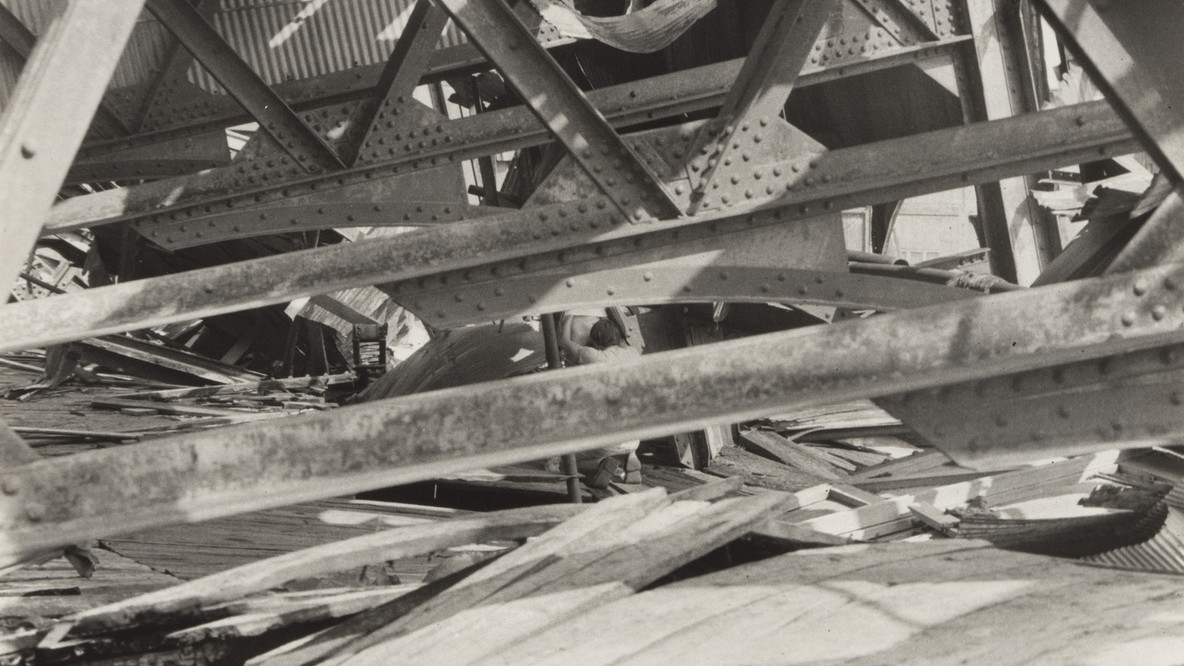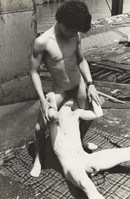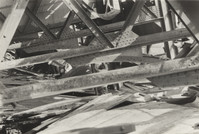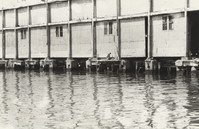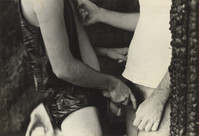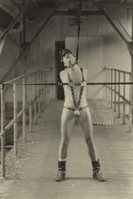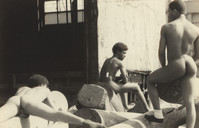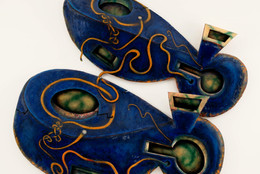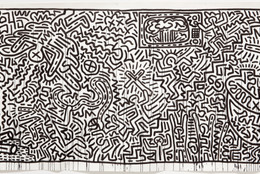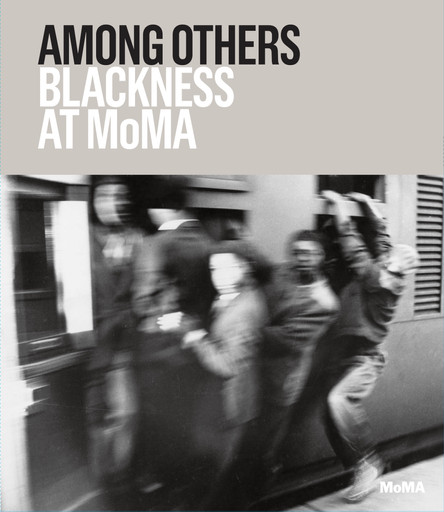“Although initially terrified of the piers, I began to take these photos as a voyeur [and] soon grew determined to preserve the frightening, mad, unbelievable, violent, and beautiful things that were going on at that time.”
Alvin Baltrop
Alvin Baltrop’s photographs were virtually unknown during the artist’s lifetime. A Bronx-born, working-class African American, many of whose pictures are sexually explicit, Baltrop encountered only rejection from the art-world establishment. The majority of his extant photographs depict the scene at the dilapidated Hudson River piers adjacent to New York’s Greenwich Village and Meatpacking District. During the 1970s and ’80s, when Baltrop photographed there, the piers were a playground for men seeking sex, sunbathing, making a provisional home, or just hanging out and taking in the splendor of the industrial ruins. Nefarious deeds also occurred: theft, gay-bashing, even murder.
Baltrop claimed to be terrified of the piers at first, but also intrigued; he began taking photographs there, he said, as a voyeur. Eventually he became a denizen of the piers, at times living nearby in his moving van, which was also his source of income. His rapport with certain of the piers’ users is clear enough in the straightforward portraits he made there, including one of Marsha P. Johnson, the beloved Stonewall veteran and trans activist whose dead body would be discovered in 1992 in the Hudson River, near the very place where Baltrop likely took her picture. The rapport is even clearer in photographs of men removing their clothes to pose for Baltrop. And some photographs are so intimate as to suggest that the sex they depict is staged for his camera—or, indeed, that photographing was part of the action.
Baltrop’s picture of an interracial couple posing on a plaid blanket is one of several showing the two young men at play; this one is the most tenderhearted. The standing boy looks down affectionately at his buddy and lightly caresses his arms. The composition is studied: Baltrop takes advantage of the scene’s bright sunlight to enhance the contrast of skin tones, juxtaposing the flattening whiteness of the bottom boy against the dark shadow that vertically bisects the top boy’s chest. The latter’s contrapposto stance continues in the curve of his partner’s submissive position.
As much as Baltrop was drawn to photographing sex acts, he seems to have been equally drawn to the environment in which they took place, the piers themselves. Sometimes you have to look closely even to locate people within the disintegrating remains of the pier sheds. In some cases there are no figures at all; Baltrop’s subject is simply the pier architecture in its vastness and melancholy.
Baltrop printed the majority of his photographs small, no more than five by seven inches. There are variant sizes and crops of a few pictures. Because of the small size and density of information in many of the photographs, especially those of one pier taken from the distance of another, adjacent one, you have to get very close to a picture to really see it. It has been noted that Baltrop’s pier photographs constitute a significant record of a lost era of the New York industrial landscape and of gay culture’s pre-AIDS history. There is truth in that view, but it suggests that Baltrop’s project was essentially documentary in nature, whereas the intimacy of the pictures, their careful compositions, and their attention to the play of light and shadow testify to a wider ambition.
Originally published in Among Others: Blackness at MoMA, ed. Darby English and Charlotte Barat (New York: The Museum of Modern Art, 2019)
Douglas Crimp, independent scholar
Note: Opening quote is from the artist’s writings, as quoted by Douglas Crimp in “Alvin Baltrop: Pier Photographs, 1975–1986,” Artforum 46, no. 6 (2008): 269, http://www.artforum.com/print/200802/alvin-baltrop-pier-photographs-1975-1986-19341.
